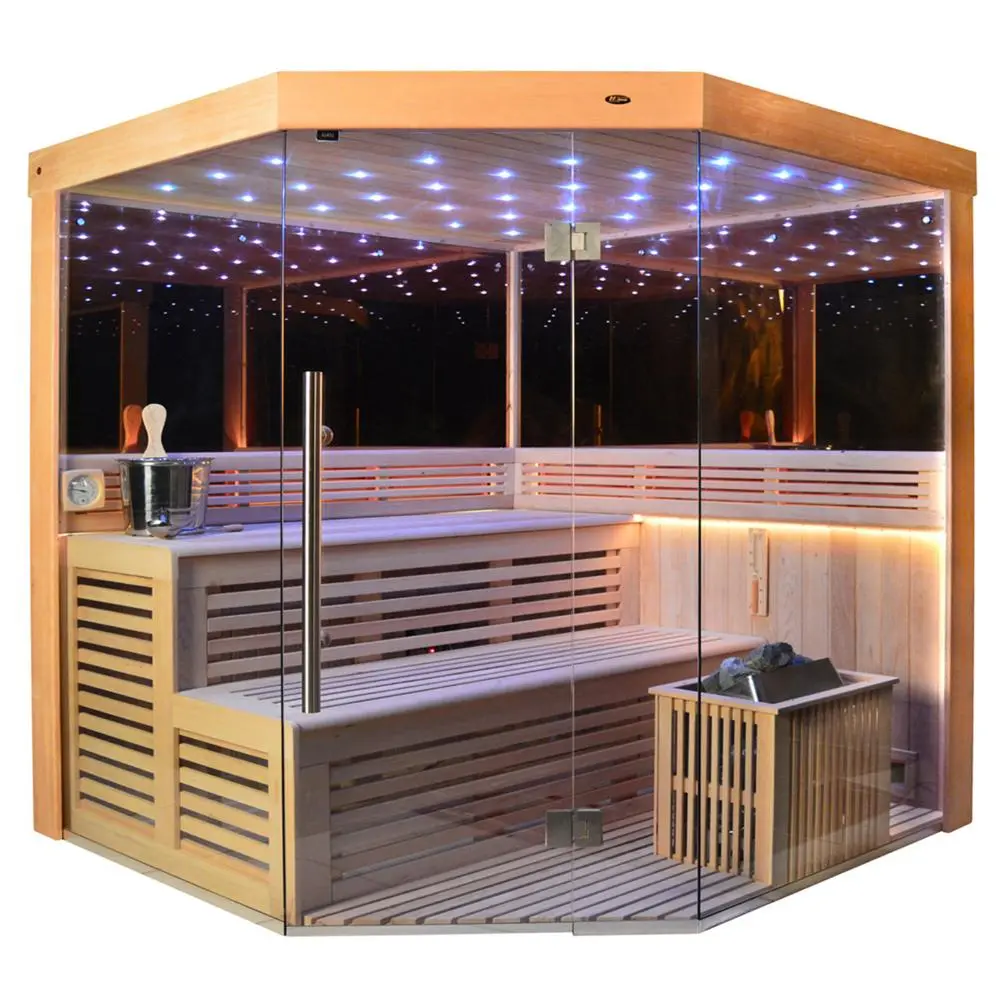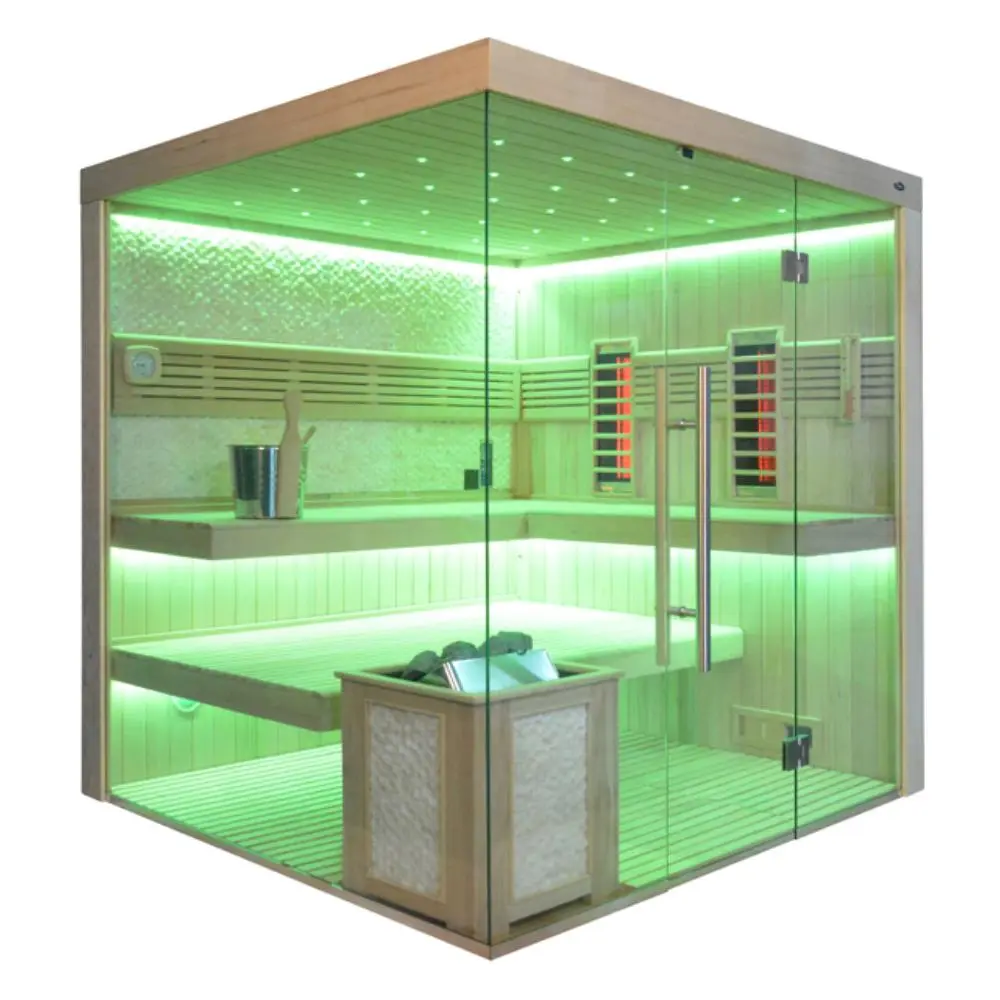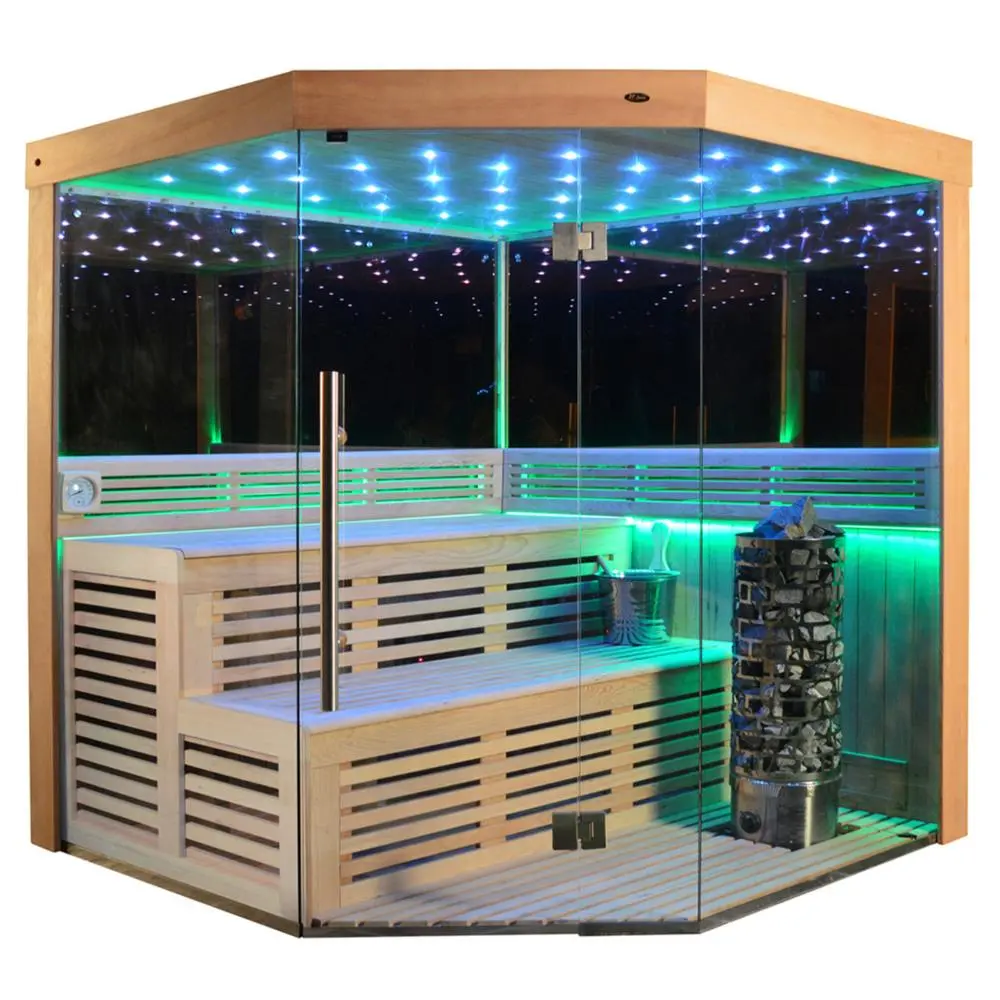Saunas have long been celebrated for their relaxation and health benefits. But if you’re new to the sauna world—or even if you’re a seasoned enthusiast—you might wonder about the differences between dry saunas and wet saunas. Which one is better for your needs? What are the benefits of each? This article will guide you through everything you need to know about dry vs wet saunas, helping you make an informed choice that will maximize your sauna experience.
Why Read This Article?
Whether you’re considering installing a sauna at home or simply want to understand the differences between dry and wet saunas, this guide provides all the essential information. By the end, you’ll know exactly what makes each type of sauna unique, their benefits, and how to choose the perfect one for your lifestyle.
What Is a Wet Sauna?
A wet sauna, commonly referred to as a steam room, is a type of sauna that operates by introducing moisture into the environment. These saunas maintain a high level of humidity, often reaching up to 100%, with temperatures typically ranging between 110°F and 120°F (43°C to 49°C). The humid environment is created by pouring water over heated stones or using a steam generator.
Features of Wet Saunas:
- High humidity levels (up to 100%).
- Lower temperatures compared to dry saunas.
- Moist heat, which creates a soothing and therapeutic atmosphere.
Wet saunas are ideal for individuals seeking relief from respiratory issues, skin rejuvenation, or a gentler heat experience.

Alt: Wet sauna room with a relaxing atmosphere.
For more details on wet saunas, check out our wet sauna room options.
What Is a Dry Sauna?
A dry sauna operates by generating heat without introducing moisture. The humidity in a dry sauna is extremely low, usually around 10-20%, while temperatures range from 150°F to 195°F (65°C to 90°C). Traditional dry saunas are commonly associated with Finnish saunas, where the heat is achieved using a wood-burning stove, infrared heaters, or electric heaters.
Features of Dry Saunas:
- Low humidity levels (10-20%).
- Higher temperatures compared to wet saunas.
- Dry heat promotes sweating and detoxification.
Dry saunas are perfect for those looking to deeply detoxify, relax muscles, and improve circulation.

Explore our luxury dry sauna rooms for a premium experience.
Dry Sauna vs Wet Sauna: Key Differences
| Feature | Wet Sauna | Dry Sauna |
| Humidity | High (up to 100%) | Low (10-20%) |
| Temperature | Lower (110°F-120°F) | Higher (150°F-195°F) |
| Heat Type | Moist heat | Dry heat |
| Primary Benefits | Respiratory health, skin hydration | Detoxification, muscle relaxation |
| Experience | Gentle, soothing | Intense, invigorating |
Understanding these differences can help you decide which sauna aligns better with your personal preferences.
Benefits of a Dry Sauna
Using a dry sauna regularly offers a wide range of benefits, including:
- Improved Circulation: The dry heat encourages blood flow, which can enhance cardiovascular health.
- Detoxification: Sweating in a dry sauna helps remove toxins from the body, promoting overall wellness.
- Muscle Recovery: Dry saunas are excellent for easing muscle tension and speeding up recovery after workouts.
Did you know that dry saunas are deeply rooted in Finnish culture? They are considered an essential part of daily relaxation and rejuvenation in Finland!
For an authentic experience, consider our indoor dry saunas.
Benefits of a Wet Sauna
The wet sauna experience is equally beneficial, with advantages such as:
- Respiratory Health: The steam opens up airways, making it a great option for individuals with asthma or sinus issues.
- Hydrated Skin: The humidity moisturizes and softens the skin, promoting a glowing complexion.
- Stress Relief: The soothing atmosphere of a wet sauna helps reduce stress and anxiety.
Many users find wet saunas to be a gentler alternative, offering a spa-like experience. Explore our wet sauna rooms for more inspiration.

Which Sauna Is Better for You?
The answer depends on your personal preferences and health goals. Here are some factors to consider:
- Choose a Dry Sauna if you’re looking for intense heat, detoxification, and muscle recovery.
- Choose a Wet Sauna if you prefer a gentler experience, respiratory benefits, or skin hydration.
For a versatile option, consider saunas that combine both dry and wet functions.
Comparing Infrared Saunas to Traditional Saunas
Infrared saunas are a modern alternative that uses infrared light to heat the body directly, rather than heating the air. While they operate at lower temperatures, they penetrate deeper into the skin, offering unique benefits such as:
- Enhanced detoxification.
- Lower energy consumption.
- Comfortable, mild heat.
Learn more about our infrared sauna rooms.
How to Use a Dry Sauna
Here’s a step-by-step guide to maximize your dry sauna experience:
- Preheat the sauna: Ensure it reaches the desired temperature (usually 150°F-195°F).
- Hydrate well: Drink water before and after your session to avoid dehydration.
- Limit your time: Start with 10-15 minutes and gradually increase as you build tolerance.
How to Use a Wet Sauna
For the best results in a wet sauna:
- Prepare the steam: Pour water over the heated stones to create steam.
- Stay hydrated: Drink plenty of water before, during, and after your session.
- Take breaks: Step out if the heat becomes overwhelming, and allow your body to cool down.

Choosing Between a Dry Sauna and Wet Sauna
When deciding between a dry sauna and wet sauna, consider the following:
- Health needs: Do you want to improve respiratory health (wet sauna) or focus on detoxification (dry sauna)?
- Personal preference: Some people enjoy the intense heat of a dry sauna, while others prefer the gentle atmosphere of a wet sauna.
- Space and installation: Dry saunas are easier to maintain, while wet saunas may require additional plumbing.
For high-quality sauna options, check out our home sauna collection.
Conclusion
Both dry and wet saunas offer incredible health benefits, but the right choice depends on your personal preferences and goals. Here’s a quick summary:
- Dry saunas are great for detoxification, muscle recovery, and intense heat enthusiasts.
- Wet saunas are perfect for respiratory health, skin hydration, and a gentler experience.
No matter which type you choose, incorporating sauna sessions into your routine can enhance your overall well-being.
Key Takeaways:
- Dry saunas offer low humidity, high heat, and detox benefits.
- Wet saunas provide high humidity, lower heat, and respiratory advantages.
- Your choice depends on your health goals and personal preferences.
Ready to elevate your sauna experience? Explore our premium sauna options at Professional Bathroom Equipment Manufacturer | Sauna Room, Outdoor Spa, Swimming Spa, Steam Shower Room – Your Export Expert Unlocking Global Markets.
